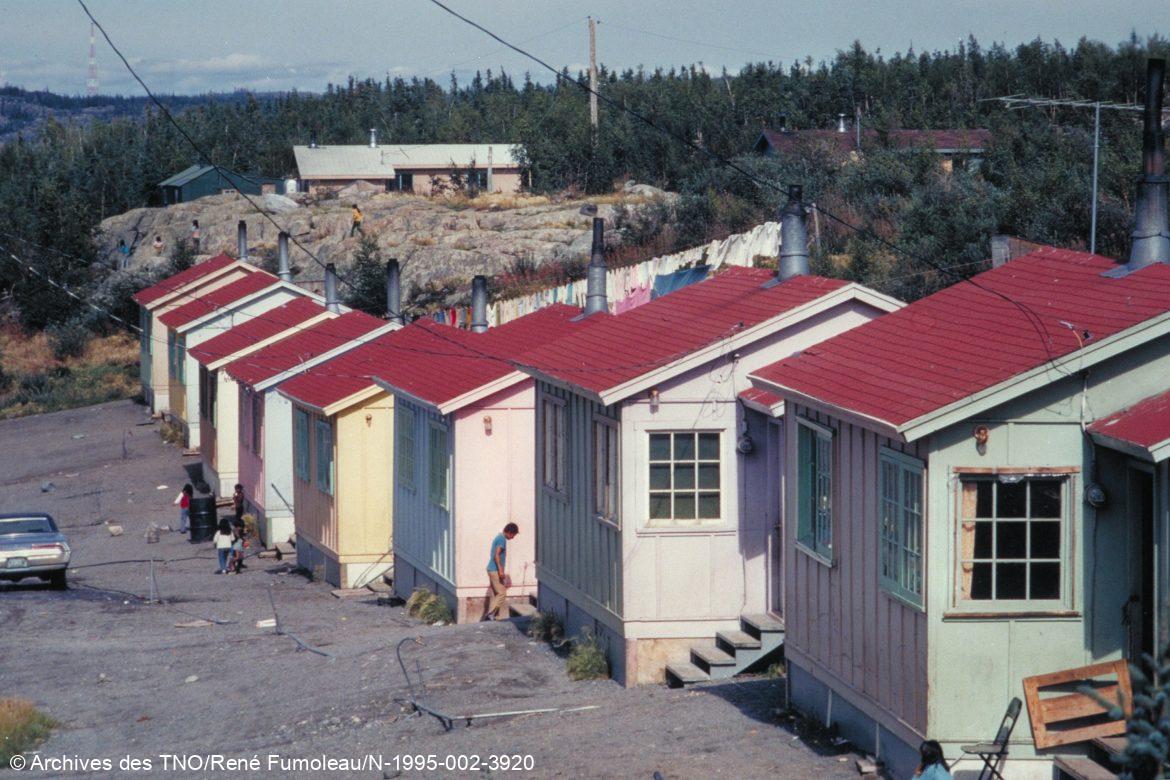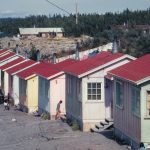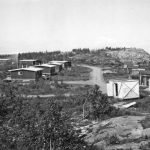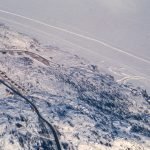1991
Ndilǫ, ‘the End of the Island’
The Yellowknives Dene First Nation’s Ndilǫ community lies within Yellowknife’s municipal boundaries on Latham Island. As traditional land, the berry picking, hunting, and fishing access made it an important part of Chief Drygeese territory.
The Yellowknives Dene are descendants of T’satsaot’ine, the Indigenous Chipewyan-related people living around Great Slave Lake at the time of non-Indigenous contact. Because of their use of copper metals, the settlers have called them the ‘Copper Indians’ and later the ‘Yellowknife Indians.’ T’satsoat’ine, also spelled Tetsǫ́t’ıné, means copper or metal people. The Yellowknives Dene also call themselves Wiiliideh Dene, after the traditional name for the Yellowknife River.
The Yellowknives Dene entered Treaty 8 on July 25, 1900, when Imeh, Old Man Drygeese, met with the treaty party in Fort Resolution. Later, the new chief, Susie Drygeese, outlined the hunting grounds around their traditional lands on the north shore of Great Slave Lake, which became the Yellowknife Game Preserve in 1923. Since that time, the Yellowknives Dene have referred to this area as Chief Drygeese Territory in honour of their former chief, who wished to protect the land for Indigenous traditional use.
In the 1930s, the rush for gold development changed the Yellowknife region and impacted the Indigenous people living in Chief Drygeese Territory. Dene continued to live at the old settlement of Dettah at the entrance to Yellowknife Bay, but new housing was now needed to accommodate growing Dene families in Yellowknife. In 1951, the federal government proposed “Lot 500” at the end of Latham Island as an Indigenous-only area. The Yellowknife Dene First Nation says families were forced from the north shore villages and into town. According to the report “Can’t Live Without Work,” prepared for the North Slave Métis Alliance, the creation of this area served the developing township of Yellowknife by forcing Dene away from areas along the shoreline that the settlers were increasingly occupying. Houses were built in 1958 by carpentry students at Yellowknife high school. Due to their multicolour-paint scheme, the village became known as ‘Rainbow Valley.’ In 1991 the community’s name was officially changed to Ndilǫ, meaning ‘end of the island.’ Today, with a population of 321 (as of 2016), Ndilǫ is a thriving Yellowknives Dene First Nation community on Latham Island.
If you have ever wondered why the land acknowledgement often used for Yellowknife mentions the connection to Chief Drygeese Territory, now you know!



